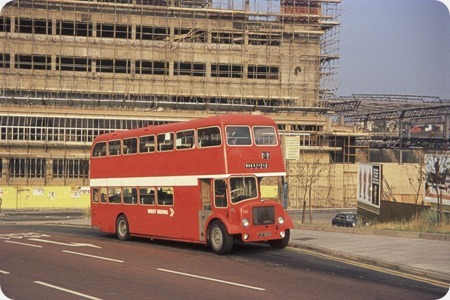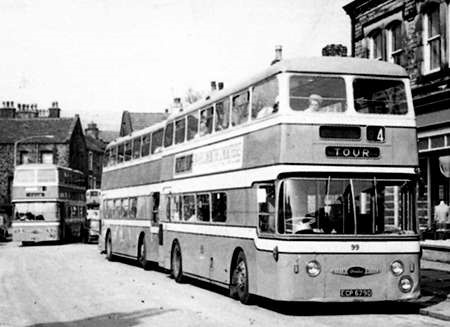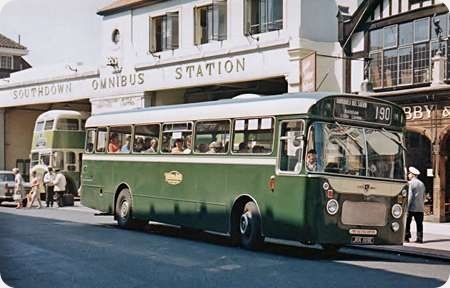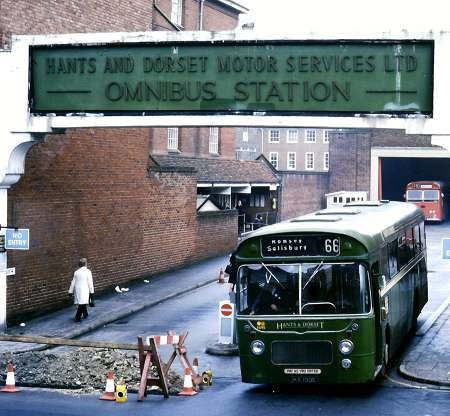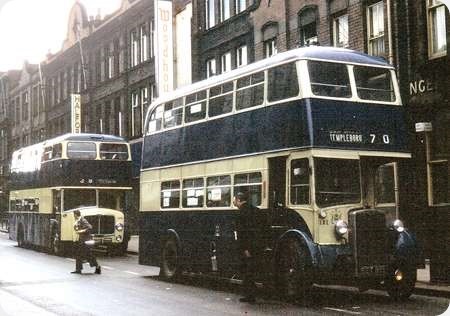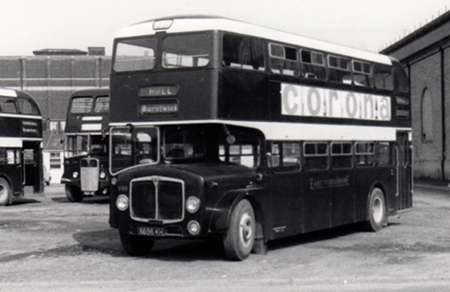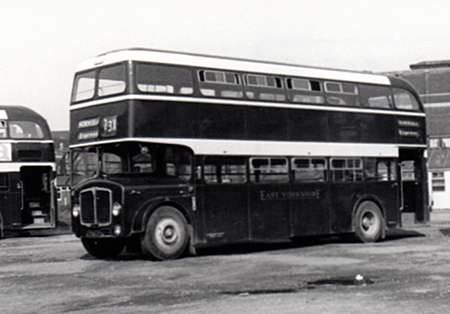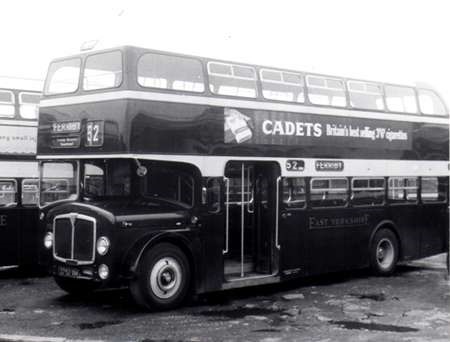West Riding – Dennis Loline III – FCP 303E – 552
West Riding Automobile
1967
Dennis Lowline III
Northern Counties H41/33F
During the mid-1960’s with the recent arrival of Geoffrey Hilditch as General Manager at Halifax Corporation, the Joint Omnibus Committee had begun to develop its tour and private hire operations, acquiring a number of secondhand coaches to that end. A works contract had been obtained requiring a number of coaches to provide transport between the smaller towns within the Wakefield/Barnsley/Doncaster triangle and Meredith & Drew’s biscuit factory at Ovenden in Halifax. Other private hires – such as to away rugby league fixtures – and the popular local afternoon countryside tours often required several coaches or DP’s and it was reckoned that economies could be made if a lesser number of suitably comfortable and speedy low-height double deckers could be provided. At the time the double deck buying policy had switched from Leyland Titan halfcabs to Daimler Fleetlines, but the latter though available in low-height form came with four-speed gearboxes and were only capable of a top speed of around 42 mph.
A Dennis Loline III demonstrator had been amongst many other types trialled in 1964, but although it had the preferred semi-automatic gearbox it too had only four speeds, but enquiries were made about the possibility of providing a five-speed version and after further trials of the same demonstrator an order was placed for what would turn out to be the last batch of Lolines to be built. Delivered in February and April 1967 they were numbered 300-304 (FCP 300-304E) and had Gardner 6LX engines, five speed semi-automatic gearboxes and smart Northern Counties H41/33F bodies with all moquette higher-backed seating.
They were most impressive vehicles to ride on and could certainly get a move on. They enabled the M&D contract to be worked by fewer vehicles at a more competitive price and were regularly used on tours, private hires and service work alike. Much has already been written elsewhere about the unfortunate unreliability of the complicated and cramped transmission involved, so I won’t go into further details here, but it was a shame as the Loline as such was an otherwise excellently engineered and quality machine. Within four years though the engineers had had enough of their problems. West Riding Automobile was desperately attempting to rid itself of its disastrous Wulfrunians and buying all the Bristol Lodekkas it could lay its hands on. The Loline was essentially based on the Lodekka and so Hilditch spotted an opportunity to be rid of them whilst they could probably still command a decent price and in due course all five became West Riding’s 464-468 (later 549-553), at first painted in their latter Tilling Green and cream livery, but by the time of this photo – taken in Hall Ings, Bradford in 1975 – they had become NBC poppy red. One was withdrawn for spares in 1973, and the others were sold to North’s the dealer in 1977, and scrapped the following year.
Photograph and Copy contributed by John Stringer
13/07/17 – 08:03
I never rode on these Halifax Lolines, as I (utterly unregretfully) left my job at HPTD Traffic Office towards the end of 1966, but I did spot them about on my occasional visits in the years immediately following. Some other Lolines and a number of FLF Lodekkas also had semi automatic gearboxes which seem to have run satisfactorily in service, though I believe that all these were four speed units. As John says, the Halifax Lolines were SCG five speeders, and the problems seem to have dwelt therein. Given the fact (from GGH himself) that they were capable of ‘well over’ 50mph with the 1700rpm 6LX, it is clear that they were obviously very highly geared indeed in fifth. This would have stressed the transmission components considerably, especially in the challenging Halifax operating environment. Certainly the trouble free Aldershot and District constant mesh five speeders were no sluggards, even with the 6LW engine, though, with a top speed of about 50mph, they were not as highly geared as the Halifax examples. In his book "A Further Look At Buses" Hilditch lists the production of the various Loline models, but mistakenly shows the Reading Mark III machines as having semi auto gearboxes. They were constant mesh, the first batch having four speed Dennis boxes, while the later ones had five speed Bristol units with fifth gear blanked off (a decidedly curious arrangement). Incidentally, the location of John’s photo seems to be that of my last picture in my West Riding Wulfrunian gallery, but I see that the fine Victorian building in the background has been superseded by a ‘modern’ architectural excrescence.
Roger Cox
13/07/17 – 16:21
I believe the Eastern National semi auto FLFs were 6LX/five speed. The Crosville semi autos were also five speed, but had the less powerful 6LW, which would provide less stress for the transmission.
I have never heard of either of the above types being particularly troublesome, so the answer may have had something to do with the Halifax Lolines higher (?) gearing.
James Freeman
21/07/17 – 07:03
I remember the Halifax Lolines very well and I remember going on a countryside tour to Delph on one. To me they represented the ultimate half cab D/D development ie Gardner 6LX engine, 30 ft in length, semi automatic gearbox and nice airy interior, a great pity they were flawed.
Andrew Spriggs
22/07/17 – 07:01
What a surprise I got when I read Andrew Spriggs’ comment above, and found mention of my home village of Delph.
Not often mentioned in bus circles, but featured in the film ‘Brassed Off’ when the band plays at the Whit Friday Contests.
My family ran the village Post Office in Delph for a number of years, and the Halifax buses on the Day/Afternoon Excursions used to stop right outside, so the passengers could stretch their legs and have a wander down by the River Tame, and possibly have a beverage (or two), in one of the 4 pubs.
The White Lion being run by Sonny Ramadhin a West Indian cricketer of some renown in the 1950s and 60s.
I recall a number of vehicles being used including Lolines, PD3s, and later Fleetlines, along with single deckers if the loadings were not overly generous. Delph, and Saddleworth was of course no stranger to Dennis Lolines, as the local operator, North Western Road Car Company, ran a large fleet of them.
Delph was of course the home of one Geoffrey Hilditch for a number of years, and I think the area made a lasting impression on him, as he is buried in the Grave Yard of Denshaw Church, which is the next village up the valley.
Anyway enough of my ramblings, and attached is a picture which was sent to me a number of years ago, of 3 Fleetlines in Delph (King Street), on the said Excursions.
The Post Office is situated just out of shot to the right, and if shown, would probably show me hanging out of the flat window on the top floor.
Stephen Howarth
Quick links to the - Comments Page - Contact Page - Home Page
